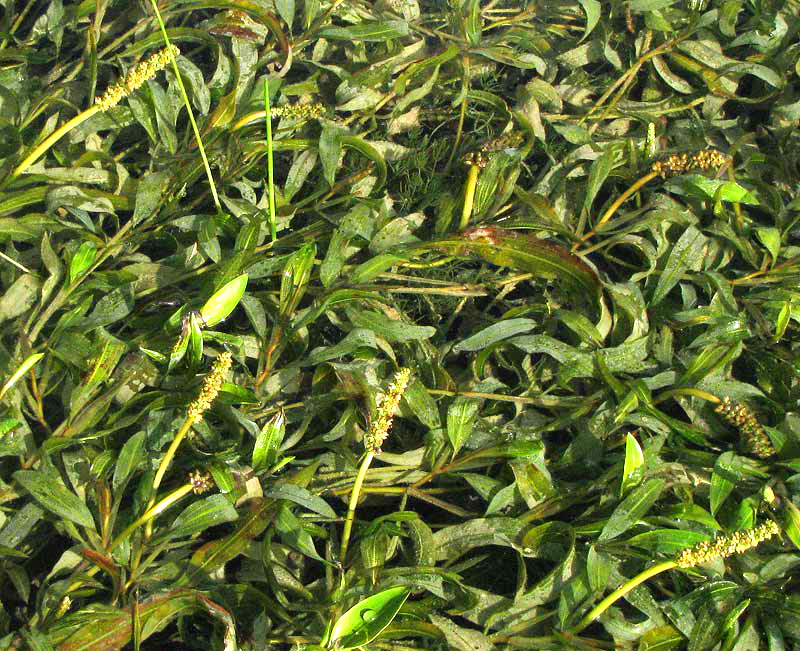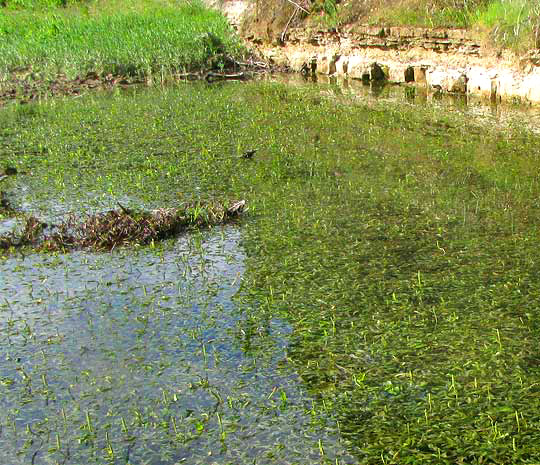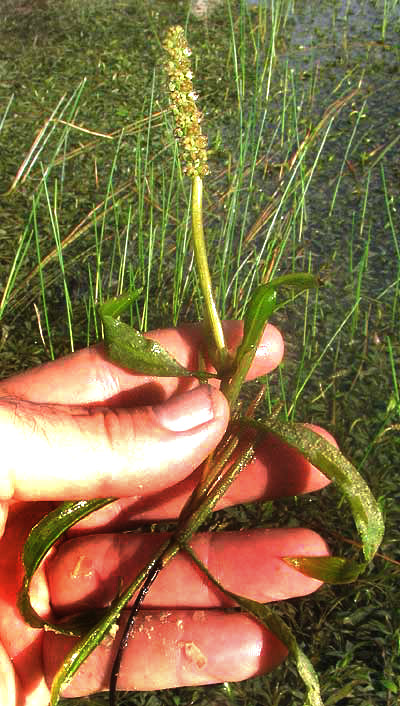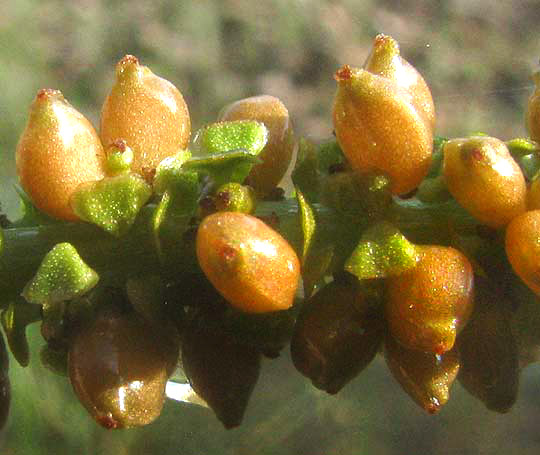Excerpts from Jim Conrad's
Naturalist Newsletter

from the July 28, 2013 Newsletter issued from the Frio Canyon Nature Education Center in the valley of the Dry Frio River in northern Uvalde County, southwestern Texas, on the southern border of the Edwards Plateau; elevation ~1750m (~5750 ft); N29.62°, W99.86°; USA
PONDWEED
Nowadays the little Dry Frio River consists of a chain of isolated pools separated by stretches of gravel. On the upstream side of each pool usually you find water flowing from the gravel, so the Dry Frio still flows, just mostly beneath gravel. All the ponds are shallow and many are choked with aquatic vegetation, such as the one shown below:

In that photo at the top, right, horizontal beds of Glen Rose Limestone outcrop, with water dripping from between some of the beds. At the top, left a thicket of Water-willow, Justicia americana, is stranded atop dry gravel, though earlier in the year the plants stood in water. What's especially interesting in the picture, though, is the aquatic vegetation. Note how slender little fingerlike items emerge from the water's surface, pointing at the sky. I've been waiting for this, for those fingers are the aquatic vegetation's flowering spikes. At the top of this page you can see them closer up emerging from tangles of floating leaves and stems.
A flowering, leafy stem lifted from the water is shown below:

We've run into this group of plants before, the pondweeds, genus POTAMOGETON, a monocot-type plant so distinct and specialized that it has its own family, the Pondweed Family, the Potamogetonaceae. We've seen the American Pondweed in Kentucky, and the Curled and Floating Pondweeds in Oregon. However, this Texas pondweed is different from those. About a hundred pondweed species are recognized, with 33 listed for North America, so it's not surprising to encounter a different species here.
The main field mark for this species is that its leaves are slender but with definite blades that don't crinkle, and the top leaves that float at the water's surface are attached to the stem by fairly short petioles. You might enjoy comparing our Dry Frio plant's leaves with the long-petioled ones of the Floating Pondweed we saw in Oregon at http://www.backyardnature.net/n/09/090614pr.jpg.
Our Dry Frio pondweed is POTAMOGETON ILLINOENSIS, mostly known as the Illinois Pondweed, though it occurs throughout North America, Mexico, Central America and South America. Sometimes it's also called Shining Pondweed. It's described as "a major submerged weed invading irrigation channels" in Argentina, and there are reports of it as an aquatic weed in Europe, so Illinois Pondweed seems to be a robust, adaptable plant.
Pondweeds are generally regarded as creating wonderful habitat for many kinds of small, aquatic organisms, and it's true that the water beneath our Illinois Pondweed's floating leaves teemed with tiny, pale specks darting about living their lives, plus there were mosquito fish and predatory aquatic beetles among them, so this "vegetation clogged pond" was a tremendously productive ecosystem.
Pondweed's drupaceous fruits (fleshy and not splitting at maturity, with one seed in a hard shell) are grainlike and stand about 1/8th inch tall (3mm) above the spike rachis, as shown below:

You can imagine that a duck might relish such a snack.